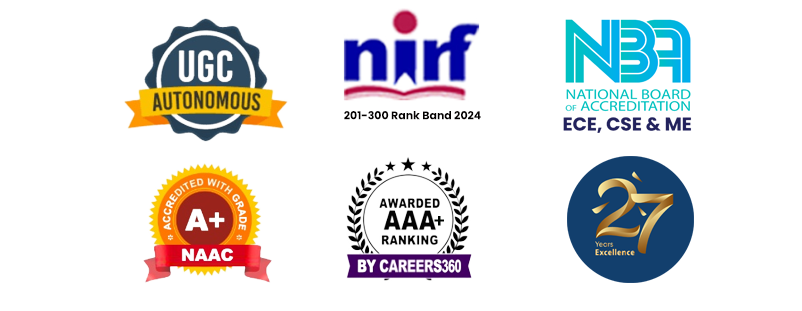Clear goals and adequate preparation
The goals of innovative practices in the teaching-learning process are to make the students get insight into knowledge, skill sets and, in the course, and obtain good grades in the End Semester examinations.
To achieve this faculty members are consistently taking the following measures:
- Attending Faculty Development Programme
• Delivering lectures in Value Added Courses
• Undergoing industrial training and Implant training
• Undergoing Advanced Training Programme
• Self-equipping through Institute – Industry Interaction
• Pursuing online courses
This enables the faculty members to get adequate preparation with subject knowledge to achieve the goal in the teaching-learning process.
Appropriate Methods, Effective Presentation, Reflective Critiques:
The Teaching and Learning methods are very much essential for the Mechanical Engineering students to visualize most of their core concepts like Heat Transfer, Finite element Methods, Robotics & applications, Theory of Machines, and Fluid Mechanics. The importance of these subjects can be easily understood by looking at any of the question papers of competitive exam like GATE. Many students will find it difficult to understand the concepts of this subject because of the nature of the subject. It requires the students to visualize the each and every topic in three dimensional. The students also find it difficult to do calculations involved in the subject since most of the quantities are vector. Hence to create interest among students and to make the subject comfortable for them to learn, various innovative practices were adopted in the teaching-learning process.
The list of innovative practices followed in teaching-learning processes
| S.No. | Innovations by the Faculty in Teaching and Learning |
|---|---|
| 1. | Learning with technology involving creation of YouTube channel |
| 2. | Learning with live demonstration of computer hardware |
| 3. | Learning with Course Certifications (NPTEL, Coursera, Solo Learn, Spoken Tutorial, &Udemy,EdX) |
| 4. | Learning by Research Paper |
| 5. | Learning by Industrial Visit |
| 6. | Teaching through Collaboration(Group discussions, Group Projects) |
| 7. | Teaching through Role Play |
| 8. | Teaching through Technology (Mind Map tools, etc.) |
| 9. | Teaching through Cloud Computing |
| 10. | Demonstration of Project through Animated Video and handmade Poster |
| 11. | Teaching through Flipping Classroom |
| 12. | Teaching through Alumni Interaction |
| 13. | Teaching through Virtual Labs (EBOX, BYTEXL) |
| 14. | Student Seminars |
| 15. | Blended Learning |
| 16. | Virtual Teaching – Learning Management System (LMS) (Google Class Room, Microsoft Teams) |
| 17. | Project Based Learning |
| 18. | Social Responsibility |
| 19. | Teaching through Animations and Presentations |
| 20. | Learning by Technology (Blogs, Online Test Tools-Moodle) |
| 21. | Digital Library |






